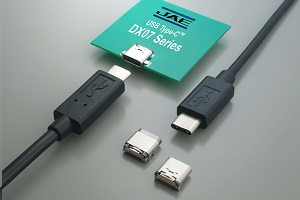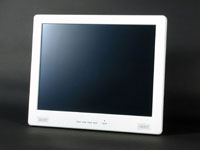Environmental Report 2016
Eco-friendly Products
Product-Related Efforts
Eco-friendly efforts starting from the design stage are underway in order to reduce environmental impact at each stage, from product manufacturing and use to disposal.
In product design, materials with low toxicity are being used, and products are being made more energy efficient. And in mold design, other eco-friendly efforts are being pursued, including improving the utilization rate of mold materials and increasing the life of the molds themselves.
The eco-friendly efforts for each product are introduced below.
Examples of Eco-friendly Products
●Connectors
USB Type-C Connector DX07 Series
- Conserving resources with product design
Compared to conventional USB Type-A connectors, the shape and size has become more compact. We were also able to reduce the amount of material that goes into making the connectors. - Saving customers energy with product specifications
This connector complies with the USB Power Delivery 3.0 standards, and it also helps to reduce the hardware required to charge portable devices. When it is necessary to have charging voltage that differs across each portable device, two-way back and forth exchange of electric data is performed between the portable device and the power source (PC and other) sides. This product, via the DX07 Series USB Type-C connector, enables the power supply side to properly supply voltage to such devices. This means that one power supply is sufficient, whereas in the past, an AC adapter had been required for each device. - Saving customers energy with product delivery forma
Delivering products in embossed taping enables auto mounting and contributes to production efficiency. - Eco-friend specifications (RoHS directive-compliant products)
Lead-free solder is used for soldered contacts so substances banned by the RoHS directive are unnecessary.

●User Interface Solutions
LCD touch panels (UT3 series)
- Reducing usage of environmentally hazardous substances
In addition to the use of lead-free solder alloy and the adoption of trivalent chromium surface processing and other measures for RoHS Directive compliance, the adoption of LED backlighting made it possible to eliminate mercury. - Lowering electricity consumption when power is not needed
In the past, energy savings had been achieved by making the power supply circuit highly efficient or by employing LED backlighting. In recent years, however, equipping devices with an auto-power saving function has reduced power consumption when not in use by some 50%.
